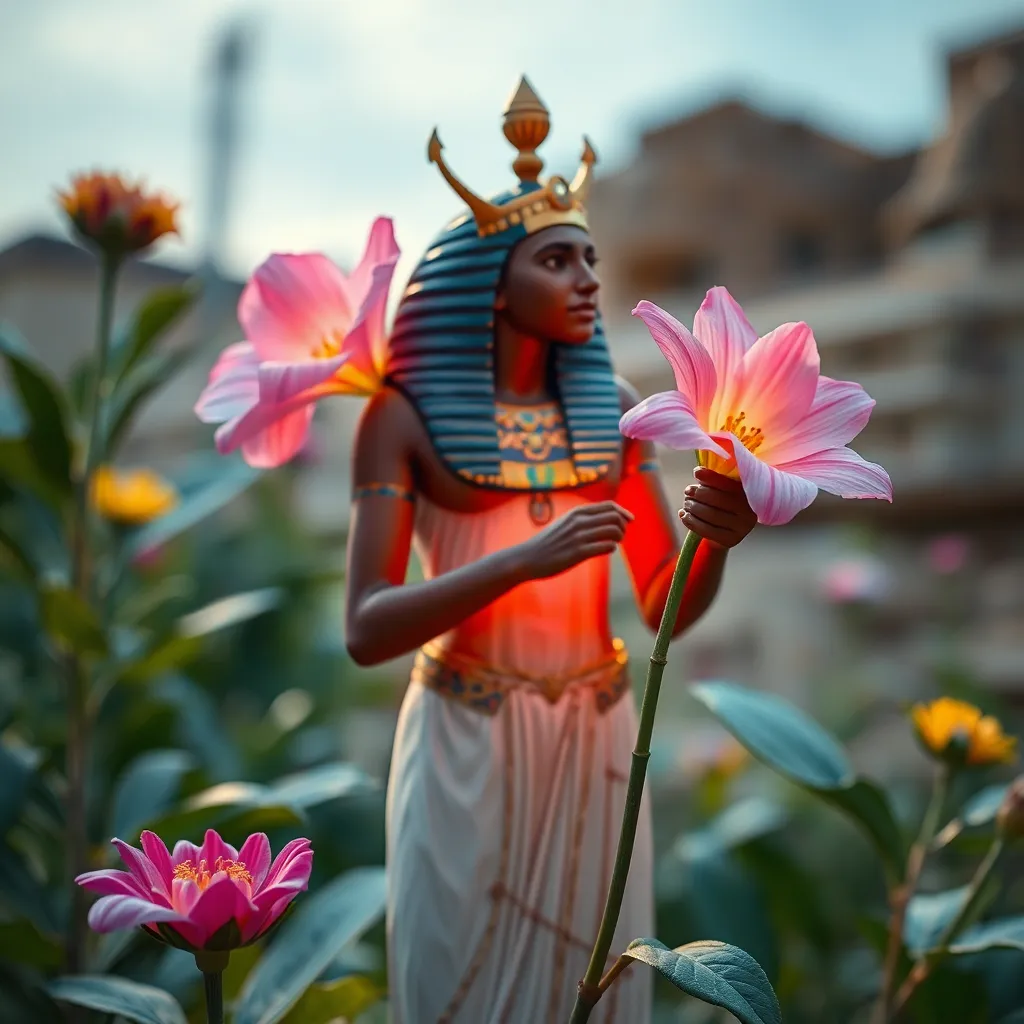The Role of Sacred Flora in Egyptian Festivals
I. Introduction
The ancient Egyptian civilization is renowned for its rich tapestry of mythology, culture, and agricultural practices. Central to this tapestry is the significance of flora, particularly sacred plants, which played a crucial role in both daily life and religious observances. Festivals, in particular, were vibrant celebrations that reflected the beliefs, values, and agricultural cycles of the society. This article explores the pivotal role of sacred plants in these festivals, shedding light on their cultural and spiritual importance.
II. Historical Context of Egyptian Festivals
Egyptian festivals were more than mere celebrations; they were essential rites that honored deities, marked agricultural seasons, and reinforced community bonds. Major festivals included:
- The Opet Festival – celebrating the god Amun and his union with the goddess Mut.
- The Wepet-Renpet Festival – marking the new year and the inundation of the Nile.
- The Sed Festival – a jubilee that celebrated the continued reign of a pharaoh.
These festivals were deeply intertwined with agriculture, as they often coincided with planting and harvest cycles. The changing seasons dictated not only agricultural practices but also the timing of these celebrations. Additionally, religious beliefs were central to festival practices, as each celebration was rooted in mythological narratives that honored the gods and sought their favor.
III. Key Sacred Flora in Ancient Egypt
Several plants held sacred status in ancient Egypt, each with its own symbolic meanings and historical uses. Notable sacred flora included:
- Papyrus – associated with the Nile and fertility.
- Lotus – symbolizing creation and rebirth.
- Sycamore – viewed as a guardian of the afterlife.
These plants were integral to rituals and celebrations, serving as offerings, ceremonial decorations, and even as materials for sacred texts.
IV. The Lotus Flower: A Symbol of Creation and Rebirth
The lotus flower, particularly the blue lotus (Nymphaea caerulea), held profound significance in ancient Egyptian mythology and religion. It was often associated with creation, rebirth, and the sun. The flower’s ability to bloom each morning and close at night symbolized the cycle of life and regeneration.
Rituals and festivals dedicated to the lotus included:
- The Lotus Festival, celebrating the arrival of spring.
- Rituals performed at dawn, symbolizing the sun’s rebirth.
Artistic representations of the lotus were prevalent in temple decorations, where it adorned columns and walls, embodying divine beauty and purity. It was also used in jewelry and other ornamental items, symbolizing its cherished status in society.
V. Papyrus and Its Multifaceted Role
Papyrus (Cyperus papyrus) was not only a sacred plant but also a vital resource in daily Egyptian life. It was used to make paper, boats, and mats. In religious contexts, papyrus was associated with the Nile River, representing fertility and abundance.
During festivals, papyrus played a significant role, including:
- Being used in offerings to the gods.
- Serving as a decoration in temples and during processions.
The symbolism of papyrus extended beyond its physical uses; it represented the sustenance provided by the Nile, reflecting the interconnectedness of nature, agriculture, and spirituality in Egyptian culture.
VI. Sycamore Tree: Guardian of the Afterlife
The sycamore tree (Ficus sycomorus) was deeply rooted in Egyptian funerary practices and mythology. It was often depicted as a protective entity that offered shade and nourishment to the deceased in the afterlife.
Its cultural significance included:
- Being associated with the goddess Hathor, who was linked to motherhood and the afterlife.
- Playing a role in festivals that celebrated the dead, such as the Osiris Mysteries.
Myths surrounding the sycamore emphasized its divine associations, portraying it as a gateway between the living and the dead, reinforcing its sacred status in both life and death.
VII. Ritual Practices Involving Sacred Flora
Ritual practices in ancient Egypt frequently incorporated sacred plants, reflecting their spiritual significance. Common elements included:
- Offerings of flowers and plants to deities during festivals.
- Decorations made from sacred flora for temples and altars.
- Ceremonial attire adorned with motifs of sacred plants.
These practices fostered community bonding and identity, as festivals were collective experiences that reinforced social ties and cultural heritage. The use of sacred flora in rituals also served to connect the community with their deities, embodying their beliefs and values.
VIII. Conclusion
The role of sacred flora in Egyptian festivals was profound, intertwining spirituality, agriculture, and community identity. The lotus, papyrus, and sycamore tree were not merely plants; they represented essential aspects of ancient Egyptian life and belief systems. Their enduring influence is still reflected in modern Egyptian culture, where ancient traditions continue to resonate.
As we explore these botanical practices and their meanings, we uncover a deeper understanding of how nature shaped the spiritual and social fabric of ancient Egypt. The legacy of sacred flora invites further exploration into its significance and the ways it continues to inspire contemporary cultural expressions.




